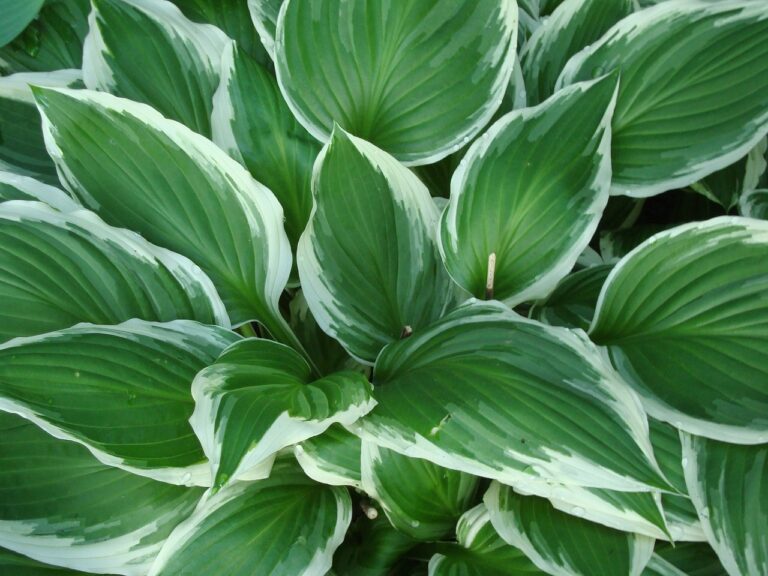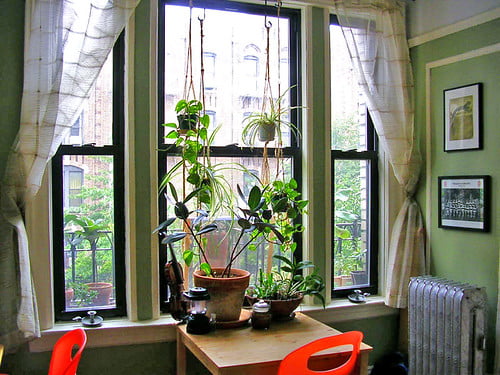Understanding Companion Planting in Shaded Areas
In shaded areas, shade plays a vital role in plant growth by maintaining soil conditions and protecting delicate plants. Shade-tolerant companions like lettuce and kale create a favorable environment, while taller plants provide natural sun protection. Herbs such as mint and parsley complement vegetables well. Understanding shade companion planting can optimize garden space, boost plant productivity, and create a sustainable ecosystem. Strategic plant selection, vertical gardening, and crop rotation are key for success. Discover how shade companion planting can transform your garden into a thriving, diverse habitat that benefits both plants and the environment.
Importance of Shade in Companion Planting
Shade plays a pivotal role in companion planting by regulating soil temperature and moisture levels, thereby promoting ideal conditions for plant growth. In shaded areas, the presence of shade-tolerant plants such as lettuce, spinach, and kale can create a microclimate that benefits more sun-sensitive crops. This strategic placement not only shields delicate plants from excessive heat but also helps conserve moisture in the soil, reducing the risk of water stress.
Moreover, utilizing taller companion plants to provide shade offers additional advantages. These taller plants act as natural sun blockers, preventing sunscald on the leaves of smaller, more vulnerable crops during hot weather. The shade they provide also fosters a habitat conducive to beneficial insects, which play a vital role in controlling pests naturally. By understanding the sunlight requirements of different plants, gardeners can optimize their companion planting arrangements to maximize productivity in shaded areas.
In essence, shade in companion planting is not merely about blocking sunlight. It involves creating a harmonious ecosystem where each plant interacts to improve overall garden health and yield. By carefully selecting shade-tolerant plants and incorporating taller companions strategically, one can harness the power of shade to cultivate a thriving and sustainable garden.
Selecting Shade-Tolerant Companion Plants
In shaded areas where the presence of shade-tolerant plants like lettuce, spinach, and kale is important, selecting companion plants that thrive in lower light conditions becomes a vital choice to optimize garden productivity. When considering shade-tolerant companion plants, Swiss chard stands out as an excellent choice. Its ability to thrive in partial shade makes it a great companion for vegetables like lettuce and spinach. Additionally, sweet corn can provide shade for these plants with its tall stalks, creating a mutually beneficial environment. Climbing beans are another suitable option, as they can grow vertically, utilizing the available space efficiently without overshadowing other plants.
For herbs, basil is a versatile choice that can adapt well to shaded areas while adding flavor to various dishes. Shade-tolerant herbs like mint, parsley, and cilantro can also complement vegetables like kale and Swiss chard, enhancing the overall garden layout. Understanding the unique characteristics of these plants, such as long taproots that help them access nutrients deep in the soil, is important for successful companion planting in shaded regions. By carefully selecting shade-tolerant companion plants like Swiss chard, sweet corn, climbing beans, basil, and shade-tolerant herbs, gardeners can maximize yields and create a harmonious ecosystem in shaded areas.
Benefits of Shade Companion Planting
Utilizing shaded areas for companion planting presents a strategic method to optimize garden space and boost plant productivity. In shaded environments, natural shade provides a unique opportunity to cultivate a variety of shade-tolerant plants that thrive in less sunlight. Shade-tolerant plants such as lettuce, spinach, and kale can benefit greatly from companion planting in these areas.
One of the primary benefits of shade companion planting is the regulation of soil temperature. Shaded environments tend to have more stable and cooler soil temperatures, which can be advantageous for certain plants that are sensitive to heat stress. Additionally, companion planting in shaded areas helps to maintain adequate moisture levels in the soil. The reduced exposure to direct sunlight prevents rapid evaporation, ensuring that plants have consistent access to the moisture they need for healthy growth.
Furthermore, creating a harmonious garden ecosystem through shade companion planting contributes to overall garden resilience. By selecting suitable companion plants that complement each other’s growth requirements, you can establish a balanced and diverse garden that thrives in shaded conditions. This practice not only maximizes the use of available space but also fosters a sustainable and productive garden environment.
Strategies for Successful Shade Companion Planting
When optimizing shaded areas for companion planting, strategic selection of shade-tolerant plants is vital for maximizing garden productivity and plant health. Referring to a detailed Companion Planting Chart can assist in identifying suitable plant combinations that thrive in low-light conditions. Shade-tolerant plants like lettuce, spinach, and kale are excellent choices for shaded areas due to their ability to grow with minimal sunlight. To further enrich sunlight exposure for companion plants in shaded areas, implementing vertical gardening techniques such as trellises or hanging baskets can be advantageous. By utilizing vertical space efficiently, plants can access more sunlight and thrive in shaded environments.
In addition to plant selection and vertical gardening, rotating crops strategically is important for ensuring that plants in shaded areas receive adequate sunlight and essential nutrients. This practice helps prevent nutrient depletion and promotes healthier plant growth in the long term. Additionally, incorporating reflective surfaces like white stones or mulch can bounce light onto shaded plants, aiding in their photosynthesis process and overall growth.
For a diverse and thriving shaded companion planting area, consider integrating shade-loving herbs such as mint, parsley, and chives. These herbs not only add variety to the garden but also flourish in partially shaded environments, complementing other companion plants effectively. By implementing these strategies, gardeners can optimize their shaded areas for successful companion planting and achieve a flourishing garden ecosystem.
Examples of Shade Companion Planting Success
Maximizing the potential of shaded areas for companion planting involves strategically selecting and pairing shade-tolerant plants to create harmonious and productive garden ecosystems. When it comes to instances of shade companion planting success, incorporating a mix of shade-tolerant plants such as lettuce, spinach, and kale can yield impressive results. These plants not only thrive in limited sunlight conditions but also help deter pests naturally. Pairing them with taller varieties like tomatoes or beans can optimize space and light utilization in shaded areas.
In addition to vegetables, herbs like mint, parsley, and chives are excellent choices for shaded areas. These herbs not only add flavor to your dishes but also attract beneficial insects that aid in pollination and pest control. Moreover, incorporating shade-tolerant flowers such as impatiens, begonias, and hostas can improve the visual appeal of your garden while providing additional benefits like attracting pollinators.
To ensure the success of shade companion planting, consider utilizing raised beds or vertical gardening techniques. These methods help create microclimates within shaded areas, optimizing growing conditions for shade-loving plants. By carefully selecting the best companion plants and strategically arranging them in shaded areas, you can establish a thriving garden ecosystem that naturally deters pests and promotes plant growth.






